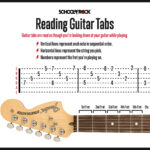Electric Guitar Pedals, often called stompboxes, are essential tools for guitarists and bassists seeking to shape their sound. These compact units sit on the floor, ready to be engaged with a tap of the foot, and they open up a universe of sonic possibilities far beyond the raw sound of an electric guitar plugged directly into an amplifier. For musicians aiming to craft a unique and expressive voice, understanding and utilizing electric guitar pedals is paramount.
What is an Electric Guitar Pedal?
At its core, an electric guitar pedal is an effects unit designed to modify the audio signal of your instrument. The most basic electric guitar pedal, or stompbox, typically features a footswitch for on/off control, one to three knobs (potentiometers) to adjust effect parameters like intensity, gain, or tone, and an LED indicator to show when the effect is active. Stepping on the footswitch engages the effect, altering the guitar’s signal before it reaches the amplifier. More advanced electric guitar pedals can boast multiple footswitches for different functions, a wider array of knobs and switches for deeper control, and even digital displays to show effect settings or presets. Guitarists often connect multiple electric guitar pedals together to create an “effects chain” or “signal chain,” where the audio signal passes through several pedals sequentially, each adding its unique character to the overall sound.
Exploring Popular Types of Electric Guitar Pedals
The world of electric guitar pedals is vast and varied, offering a diverse palette of sounds. Among the most popular is the distortion or overdrive pedal. These pedals introduce harmonic distortion, ranging from subtle warmth to aggressive crunch, emulating the sound of a tube amplifier pushed to its limits. They are fundamental in genres like rock, blues, and metal. The wah-wah pedal is another iconic effect, creating a sweeping vocal-like tone by filtering frequencies, often used expressively in funk, rock, and blues. Fuzz pedals deliver a thicker, more saturated distortion, characterized by a buzzing, “fuzzy” tone, popular in psychedelic rock and stoner rock.
For adding depth and space, delay and reverb pedals are crucial. Delay pedals create echoes of the original signal, while reverb pedals simulate the natural reflections of sound in a space, from a small room to a vast hall. Modulation pedals, such as chorus, flanger, and phaser, create swirling, shimmering, or jet-plane-like effects by modulating the audio signal. Chorus pedals thicken the sound, flangers create a sweeping, resonant effect, and phasers produce a swirling, phase-shifting sound. Compression pedals even out the dynamics of your playing, making quieter notes louder and louder notes quieter, resulting in a more consistent and controlled sound. Many guitarists also employ EQ pedals (equalizers) to fine-tune their tone by boosting or cutting specific frequencies, allowing for precise sound sculpting. For adding volume boosts for solos or emphasizing certain parts, boost pedals are invaluable. Looper pedals allow musicians to record and playback phrases in real-time, enabling layered performances and creative soundscapes. Finally, noise gate or noise suppressor pedals are used to eliminate unwanted hum and hiss, especially when using multiple gain-based pedals.
Crafting Your Sound: The Electric Guitar Pedal Signal Chain
The order in which you arrange your electric guitar pedals in a signal chain significantly impacts your final tone. A general guideline to maintain clarity and definition is to place certain types of pedals earlier in the chain. It’s common practice to position compression, wah, and overdrive pedals near the beginning of the chain, closest to the guitar. These pedals often interact dynamically with the guitar’s raw signal and benefit from being processed first. Modulation effects like chorus, flanger, and phaser typically sound best in the middle of the chain. Time-based effects such as delay and reverb are usually placed towards the end, creating spaciousness and ambience after other effects have shaped the core tone.
When using numerous electric guitar pedals, unwanted noise and hum can sometimes become noticeable. To combat this, a noise gate or noise suppression pedal can be strategically placed at the beginning or end of the signal chain to effectively reduce these undesirable sounds, ensuring a cleaner and more professional tone. Experimenting with different pedal orders is encouraged, as breaking conventional rules can often lead to unique and inspiring sounds. However, understanding the general principles of signal flow provides a solid foundation for building a versatile and effective electric guitar pedal setup.

